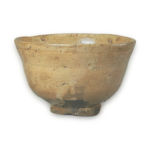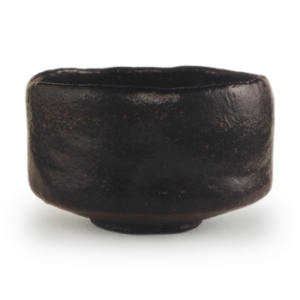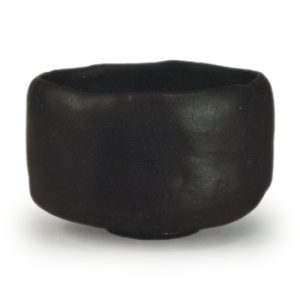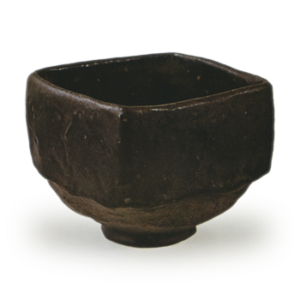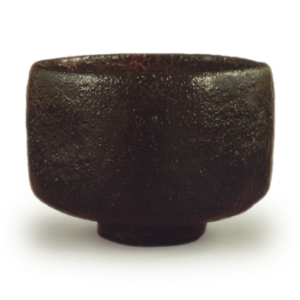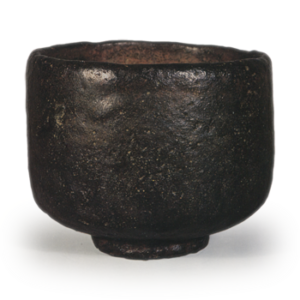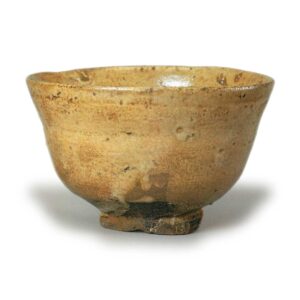
Height 7.0cm, mouth diameter 11.0cm, base diameter 4.5cm
This tea bowl is considered to be one of the most outstanding examples of kokaratsu kofuku tea bowls in the history of Japan. It was once owned by Kahei Matsuoka, a tool merchant in Kyoto, who used to hold tea ceremonies with this bowl during the Aoi Matsuri (hollyhock festival) every year. Later, it was owned by Joshunan Morikawa, a sukiya (a tea ceremony master) in Nagoya, and was included in “Taisho Meiki-kan (A Guide to Taisho Masterpieces),” and was a longtime treasured possession. The origin of the name is not clear, but Takahashian speculates that it may have been named after an iris-shaped sword decorated for the Boys’ Festival, as it is small and tight in shape. The author of the ink inscription “Shobu-tou” on the front of the inner box lid is not clear.
Although this is a small tea bowl, it is an old Karatsu bowl that shows the shape and glaze tone of the so-called Oku-Koryo style, and is a rare and tasteful piece of work. The intonation of the workmanship from the slightly lowered plateau to the edge of the mouth, which is carved out in the shape of a bamboo joint, is well arranged and yet shows a sense of gracefulness, and in particular, it has the unique characteristics of the carving inside and outside of the plateau, the tension of the waist, the taste of the edge warp of the interior of the bowl and the deep prospect. The glazed surface, especially from the outer waist to the base, is a mixture of the glaze and the clay flavor, which is very tasteful. The tatami mats on the base are thin, and there is a small width in the center of the base.

